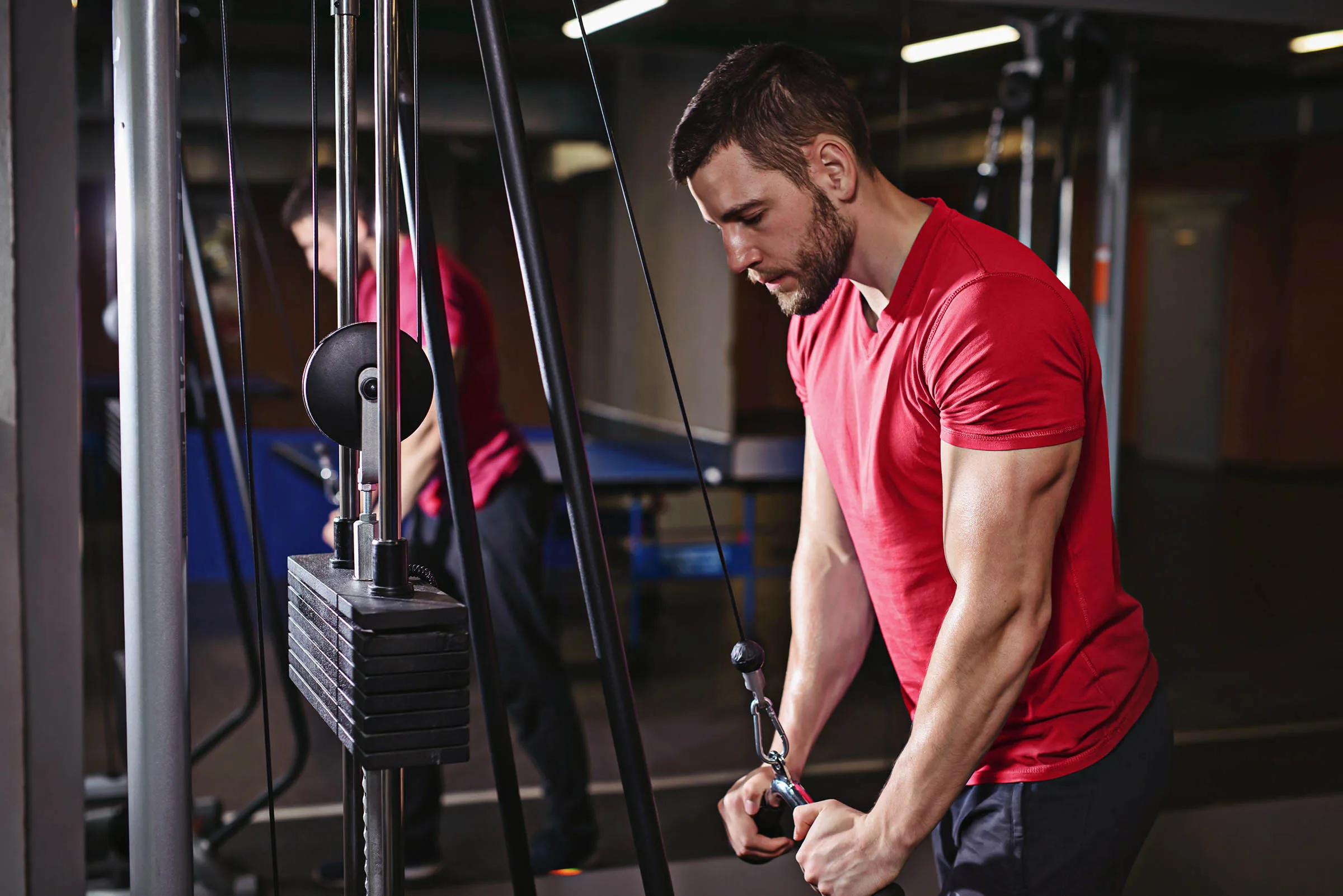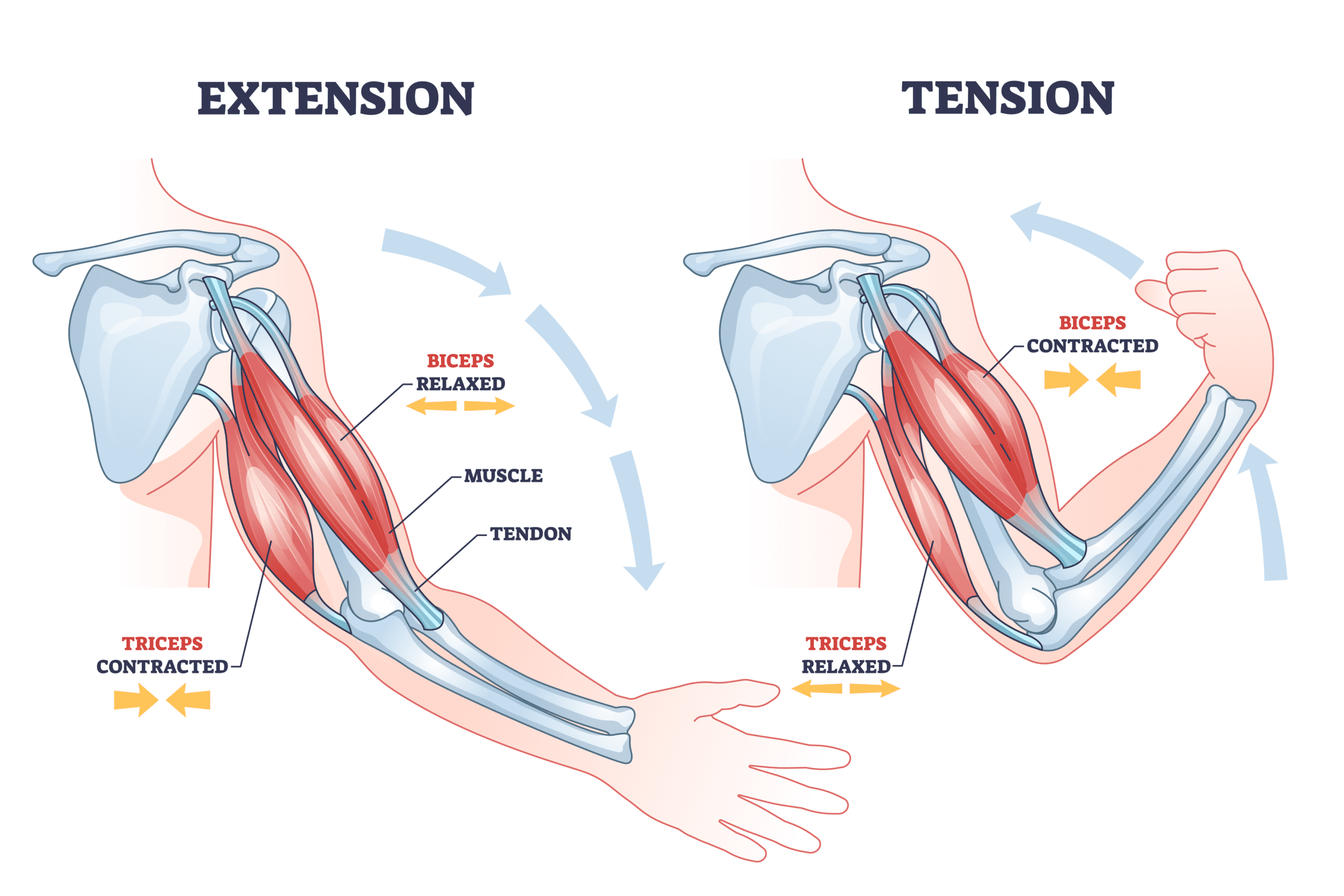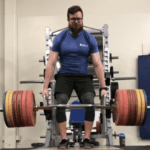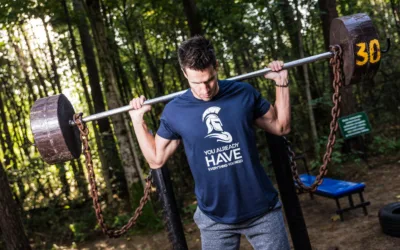Tricep Extension Variations

Marc Lavallee has trained Canadian military units in the Search and Rescue Technician (SAR-Tech) program along with members in their active duty and selection phases. He currently coaches for a policing agency. Here he examines the differences between different triceps extensions based on anatomy gives advice on what variations to include in your programming.


Change the Way You Train
Best and Worst Tricep Exercises
I love this exercise because of the variety it offers from different attachments (rope, straight bar, V-handle, EZ bar, etc.) to how it’s performed (straight sets, drop sets, single-arm, and many more).
My least favorite triceps exercise is dumbbell triceps kickback. Let me explain.
Why You Should Avoid The Dumbbell Triceps Kickback
If you think of the position of your arm, gravity, and the action being performed in this movement, it starts to make sense. It’s a super ineffective exercise.
Your upper arm is positioned parallel to the floor, your elbow is bent at 90 degrees, and the dumbbell is just hanging down.
In this position, essentially zero force is applied to the triceps and it remains this way for the first third of the exercise.
Your 20 lb dumbbell feels like 3 lbs at the start of the movement and progressively gets more difficult. Gravity pulls the dumbbell down more and more as you reach lockout.
If you’re like most people, you’re at your weakest when trying to lock out your elbow with your triceps. And this movement places the maximum amount of force at this position.
The Classic Cable Press Down is King
Cables reign supreme for certain exercises and a lot of triceps work. This is because the force placed on the acting muscles is continuous throughout the entire range of motion.
When you grab the attachment, pull in your elbows, and lift the weight off the resting stack, you’re loading your triceps with the weight on the cable.
Unlike the dumbbell triceps kickback, the exact same tension is applied throughout the movement (even at lockout).
Positioning Your Triceps Is Key
Many athletes (my younger self included) focus way too much in the mid-range positions, likely because this is where most people are at their strongest and can display strength easily.
The other two ranges (lengthened and shortened) often get neglected or sprinkled in very infrequently.
If you want to actually be strong (and not just showy strong), you need to gain strength in all three positions. This decreases the possibility of overuse injury and gives you a more well-rounded, holistic strength that goes beyond the gym.
Lengthening
To get your triceps into a lengthened position, consider its anatomy. Think about the origin and the insertion points (essentially where the triceps attach to your bones).
An arm overhead position with the elbow fully flexed at the start of the triceps exercise is a lengthened position. You can do this with dumbbells or cables.
Again, I recommend using cables for constant and equal tension on the triceps throughout the entire movement.


Mid-Range
To hit the mid-range position, come from an overhead (lengthened) position to position your arms in front of you.
These exercises include diamond pushups, any cable press down, a close-grip bench press, and dumbbell triceps extensions in a supine position.
Again, this puts you in your strongest position, allowing you to progressively overload with heavier weights quickly.
But remember, although this position is the easiest way to display strength, spending too much time here leaves the lengthened and shortened position lagging behind.
Shortened Range
If lengthened was overhead and mid-range is right in front of you, then how do you get your triceps in a shortened position?
This is achieved by moving your arm(s) across your body.
Using a cable, do a crossover pattern for your triceps extensions. Lying on a bench, use one dumbbell, bend your elbow, and cross your arm across your torso/face with the dumbbell finishing beside your ear.
Programming Triceps Extensions
To add a little variety and hit all positions in one workout, try using one cable exercise, one bodyweight, and one dumbbell exercise. For example:
- Standing Cable Overhead Triceps Extension 3 x 10-12/per arm
- Diamond Push-ups 3 x 8-12
- Lying Single-arm Cross Body DB Triceps Extension 3 x 8-10/per arm
You do not have to hit all three ranges in a given workout. But you should aim to hit one position each workout and possibly hit all three ranges within a week.
Or, swap a shortened range for one training cycle and a lengthening position for the next phase.
Don’t stress yourself out trying to hit all these different positions in one workout or that you’ve missed one or two in that week. Just try to be as consistent as possible and soon you’ll have big, juicy triceps that are strong in every position!
Find Your Perfect Training Plan
Sometimes all you need to reach your destination on your fitness journey is an expert guide. We've got you covered. Browse from thousands of programs for any goal and every type of athlete.
Try any programming subscription free for 7 days!
Related articles
Slow Reps vs. Fast Reps
You’ve probably noticed that some people in the gym tend to perform their reps as fast as possible, whereas others take a slow and controlled approach. But which is better? Dr. Andy Galpin is a Professor of Kinesiology at the Center for Sport Performance at California...
How to Do Leg Extensions Without a Machine
Short shorts are the new stinger tanks. Rocking those big tree trunks with canyon deep cuts is so hot. Leg extensions are a bodybuilding staple—they isolate your quads, the front-facing muscle group of your thighs, by flexing (bending) and extending (straightening)...
Tried-and-True Methods to Fix Plantar Fasciitis
What is Plantar Fasciitis? If you’re new to running or returning to it after a break, you might have been blighted by plantar fasciitis, a fancy name for an annoyingly common foot problem. It’s when the band of tissue that connects your heel to your toes (the plantar...


Join the community
Sign up for the latest training news and updates from TrainHeroic


About TrainHeroic
Made with love, sweat, protein isolate and hard work in Denver, CO
© 2023 TrainHeroic, Inc. All rights reserved.





